How to deal with false shield on indoor plants?
Among the pests of indoor plants, false shields, they are also coccids (Coccidae), are a fairly common species. The insect belongs to the superfamily of worms and widely populates the territory of Europe, damaging garden and indoor plantings. The pest has common features with the scale insect, and inexperienced growers often confuse them.
Types of scale insects and false scales, their differences
Pseudo-scale insects, in contrast to scale insects, do not have a wax shell, their scutellum resembles a pea in shape, while in scale insects it is flatter and not adherent to the body. Both pests belong to the family of hemiptera insects, cause the same harm and can be destroyed by the same methods.
Among the scale insects at home, the following types are most common:
- cactus;
- olive;
- palm;
- brown.
Pests settle on palms, ficuses, camellias, citrus fruits, cacti and many other plants.
False shields are larger (up to 7 mm), the external signs of an insect differ depending on the species. Females are always much larger than males. Insects have pronounced sexual dimorphism (difference between individuals of the opposite sex). Females live their lives in immobility due to the lack of wings and legs. Males, on the contrary, are active, they crawl quickly and are even able to fly.
Most often, a soft false shield settles on domestic plants.who prefers to eat citrus fruits, orchids, palm plants. The pest is extremely prolific. Each female is capable of laying up to 600 eggs at a time.
Other types of false shields live in the garden:
- Japanese wax;
- hawthorn;
- spruce;
- acacia.
The insect is easy to spot on the plant due to its brown color and relatively large size.
Injury and signs of damage
The pest poses a great danger to plants, sucking on their leaves and drawing juices from tissues. In advanced cases, this can even lead to the death of the flower. Fortunately, this rarely happens - the false shield is easier to detect than many other insects, due to its immobility and large size. The danger of the pest lies in its fertility and year-round activity.
In addition to the insects themselves, traces of their vital activity can be seen on the infected plant, which are sticky spots (the so-called honeydew). When damaged by a scabbard, the leaves turn yellow, then turn brown and dry out, young shoots do not develop. In addition, a fungus (rabble) grows on the sticky spots left by insects, forming a black sooty film on the leaves. As a result, the painful condition is aggravated.
With a careful examination of a plant affected by a false shield, the florist will notice brown plaques, which can be separated with great difficulty from the leaf or stem. As soon as the pest is detected, it is necessary to start a fight with it, which can be carried out in different ways.
How to get rid of a pest?
Anti-fraud measures include several methods that can be combined with each other. It will be necessary to show persistence, since a small number of remaining pests are able to restore their previous numbers (and even surpass them) in a short time.
Mechanical method of destruction
If you suspect the presence of a scale insect, carefully examine the shoots, leaf axils and their underside. If a pest is found, proceed as follows:
- The infected plant must be removed away from other flowers.
- The next stage is to thoroughly treat the window sill with soapy water with the addition of an insecticide (Bankol, Aktara).
- The scutes are removed from the leaves using an old toothbrush or cotton swab. You will need to remove the shields with some effort. Despite its simplicity, this method of dealing with false shield is very effective.
- After collecting and destroying insects, the soil in the pot is watered with a small amount of Aktara or Fitoverma solution.
Having absorbed the poison along with moisture, the plant will be protected from the pest for a period of about 2 months.
Use of chemicals
The chemical method of dealing with false shield involves the use of insecticides. This method is used as the main one for the treatment of fruit trees and shrubs. For example, they fight against false shield on persimmon, plum, apple, apricot.
In the garden, for spraying use Trichlorol-5, DNOC.
With a significant infection with a false shield, insecticides are also used in residential premises, but with caution. If chemistry is used, it is necessary to properly ventilate the room after processing the plants.
The following drugs are most effective against false shield:
- "Aktara". The solution is prepared from 0.4 g of the drug per 1 liter of water. The advantage of the insecticide is the absence of a pungent odor.
- Actellik. Before use, dilute 1 ml of the drug in 1 liter of water. This is a strong-smelling product that takes a long time to disappear.
- Fitoverm. The biological product leads to the death of the insect on the second day. The working solution is prepared from 2 ml Fitoverm and 1 liter of water. The product almost does not smell.
- "Bankol". The drug has a contact-intestinal action. The solution is prepared from 0.5 g per 1 liter of water. Has a faint odor.
Once prepared, a solution of any of these insecticides is used to spray the flower. From above, the treated plant is covered with a plastic bag for several hours. The procedure is repeated several times at weekly intervals until the insects disappear.
During processing, people and pets should not be in the room. Drinking water, food, medicines are temporarily removed, the compressor in the aquarium is turned off until it is completely ventilated. The spraying person must wear gloves and a mask for protection.
The use of folk remedies
Florists who do not want to use chemistry can adopt proven folk remedies that do not harm humans, but are toxic to insects.
You can destroy and scare away the false shield using:
- Infusion of onions or garlic. For its preparation, 1 head of one or another vegetable is chopped in a blender, pour 1 liter of water and infused for a week. After that, the infusion is filtered and diluted with 2 tsp. means in 5 liters of water. An infected flower is sprayed with the prepared working solution.
- Pepper infusion. In a meat grinder, grind 100 g of hot peppers. The resulting puree is poured into 2 liters of water and insisted for a day. Then the infusion is filtered, poured into a spray bottle and used for spraying. This remedy is especially effective against larvae. Adults are pre-collected by hand. Re-processing is carried out no earlier than 2 weeks later.
- A solution of lemon juice or vinegar. The acidic environment does not like the scale insect, but the solution should be of a weak concentration so as not to harm the plant. Insects are pre-collected and destroyed. After that, the leaves are wiped with a cotton pad, previously moistened with the solution. If necessary, the treatment is repeated, with an interval of 2 weeks.
For preventive purposes, you can use an infusion of onion peel, which is prepared from 150 g of raw materials and 10 liters of hot water. The tool is infused for a day, filtered and used to spray or wipe the leaves.
So that indoor flowers are not affected by the false shield, you need to provide them with full care. Be sure to apply top dressing.Plants with strong immunity are rarely attacked by pests. If, nevertheless, symptoms of the presence of an insect appear, measures must be taken immediately.
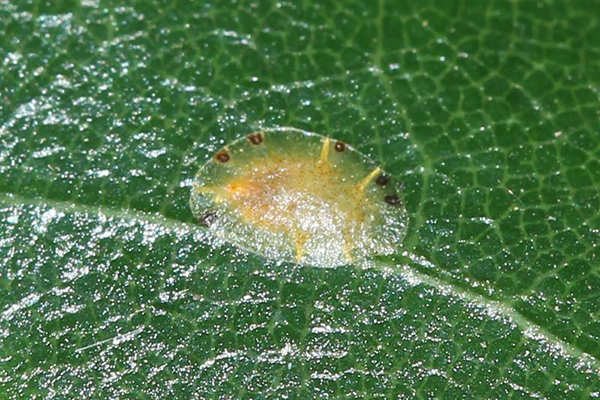
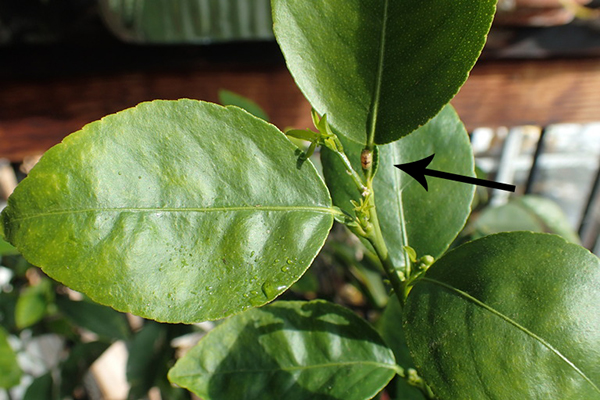
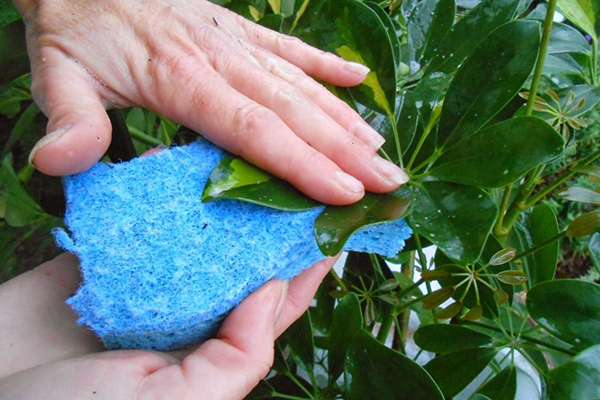
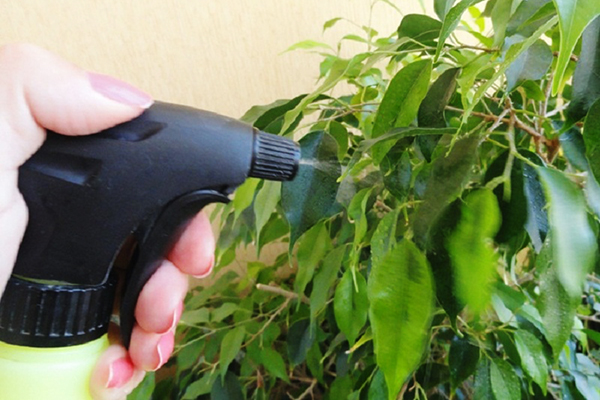
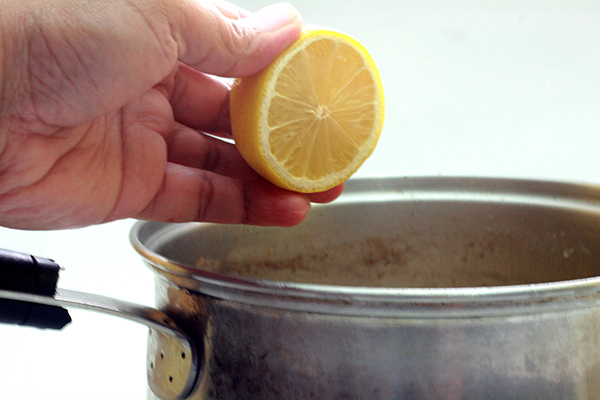

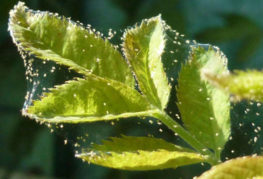
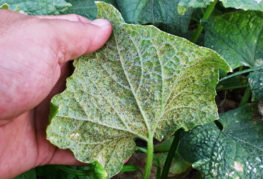

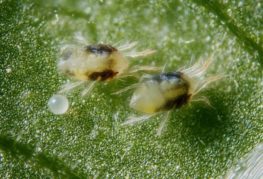
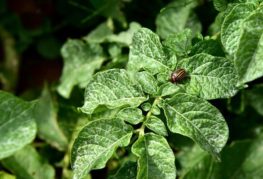
Drosophila helped! There were a lot of domestic plants infected with a false shield. I made them on one window and fought for a long time without success. Somehow, on this window, a spoiled tomato turned out to be in an inconspicuous place on which fruit flies bred. I noticed that they feed on something and on plants. A month later, all the plants were cleared of false shields by Drosophila. 4 years have passed and it is still clean.